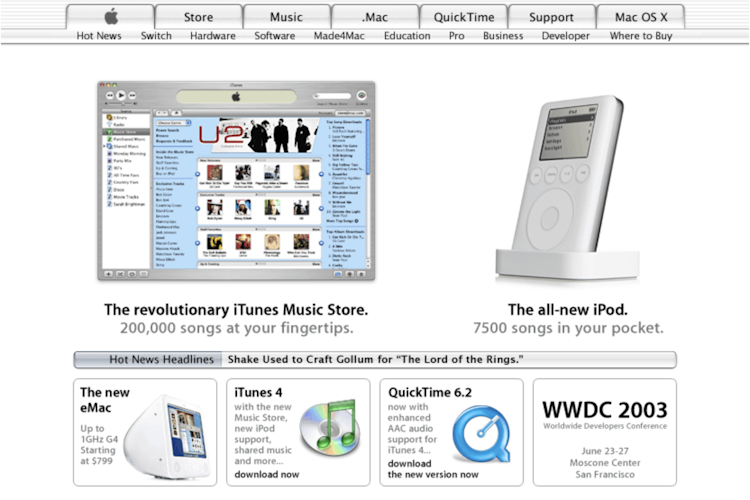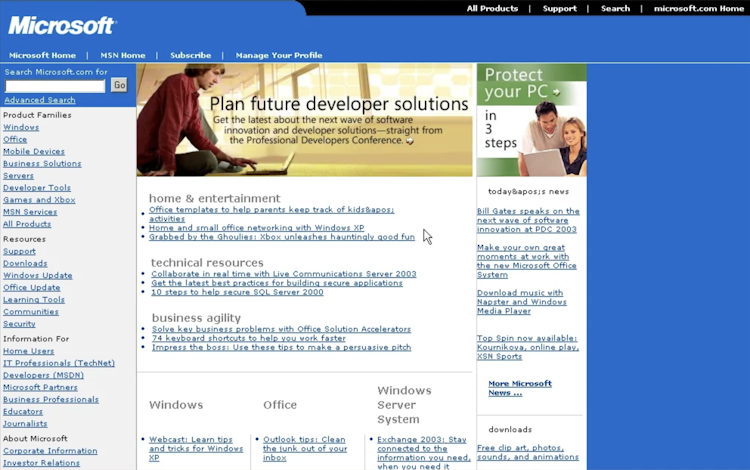It’s hard to believe, but there was a time in the web era when social media didn’t exist. Imagine this: the year is 2000. Apple is absolutely crushing it with their latest iPods...
Microsoft was... you know, being Microsoft.
People had the desire to share, as they always have. So they joined forums, created their own blogs, their own websites. There was Blogspot, Deadjournal, or Livejournal for the less adventurous. FrontPage and HTML were there for those who wanted to create their own experience 100%.
Do any of you remember maintaining a guestbook or a tag board? Having a hit counter that you followed non-stop?
Every website was unique, just like the person behind it. It was chaotic, eccentric, and genuine.
How did you discover new websites? You would depend on your friends' links, delve into their bookmarks using tools like StumbleUpon, became a part of a webring.
Many people miss this, particularly the human curation that was involved. So much so, that we are witnessing a resurgence of something similar. It's called IndieWeb.
A community of personal sites
The IndieWeb is a community of people with independent and personal websites, creating tools and methods to provide a decentralized, people-focused alternative to the corporate web and its social media silos.
It's built on two fundamental principles:
Publish on your Own Site, Syndicate Elsewhere
Or in short: POSSE. First post anything you create on your own website, and then share it on various social networks and online communities, with a link to the original content. This method helps to increase the reach of your content, all while retaining control over your content and its original web address.
Another way to share your content, is to offer an RSS feed on your site. Anyone with an RSS reader application can add you to their list of interesting sites, and be notified when you post something new.
Backfeed
It's just the flip side of POSSE. When someone likes or comments on content you've shared on ie. Instagram, these interactions should be collected and returned to the original post on your website. Similarly, if someone creates content on their own website in response to yours, they should let you know, so you can add it to the overall list of reactions.
Webmentions is a protocol that allows you to do just that. To compensate for the lack of implementation of this standard by social media, there are free services that act as a bridge, converting interactions happened inside the social into a webmention.
What does this mean?
Consider this very post. After publishing it:
As a considerate neighbor, I informed the websites I linked in my article that I had featured them (via webmentions, of course).
The result is that now, if you navigate to the end of this post, you'll find a collection of likes, reposts, and comments. These are the reactions I've gathered from all corners of the web, be it from my Mastodon post or any other site that's decided to play nice and use webmentions too.
This site also offers subscription via email and RSS Feed. I personally use a minimal, custom-built feed reader to keep up with my favorite websites. It is also public, so that I can share my readings with anyone who's interested.
There you have it, that essentially sums up IndieWeb. One of the criticisms is that it's overly complex. In reality, it's a walk in the park, at least for someone in the field... but I totally agree that the resources available for guidance are among the most cryptic I've ever encountered. To find the right hints, I had to struggle much more than I would have liked.
Anyway, now that I've managed to piece together all the puzzle parts, I'll put together a brief recap, in the hope of possibly helping someone else!



